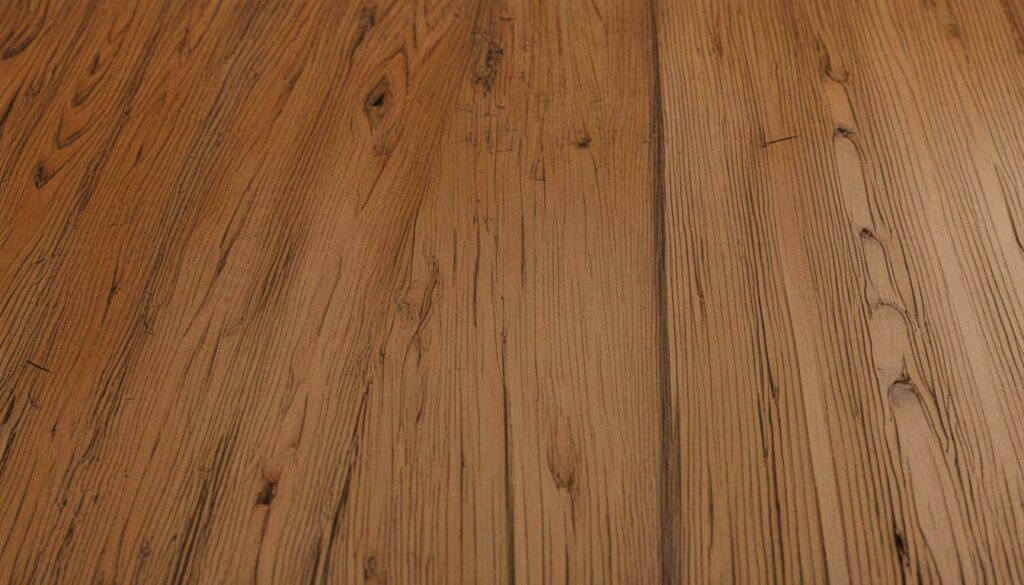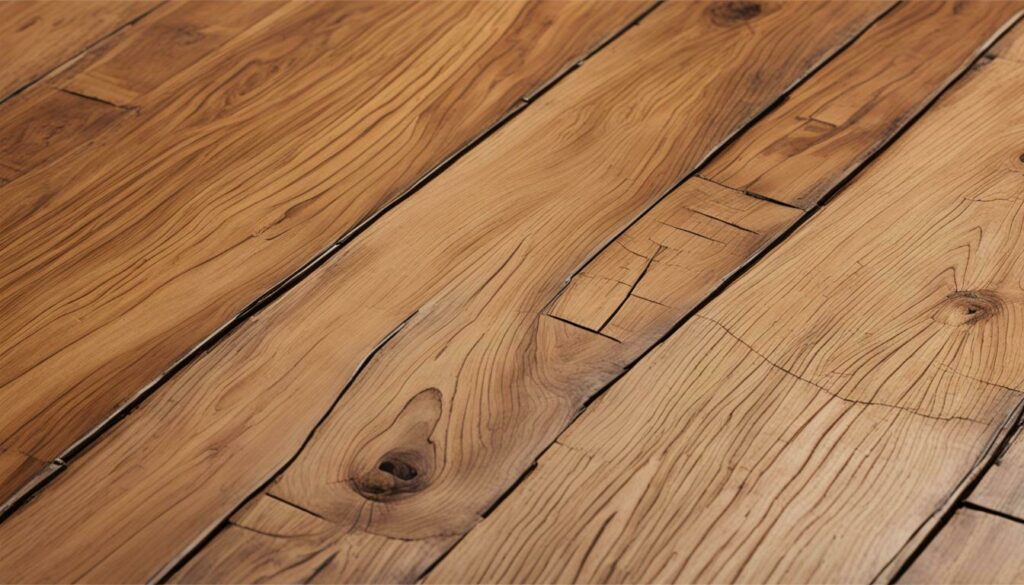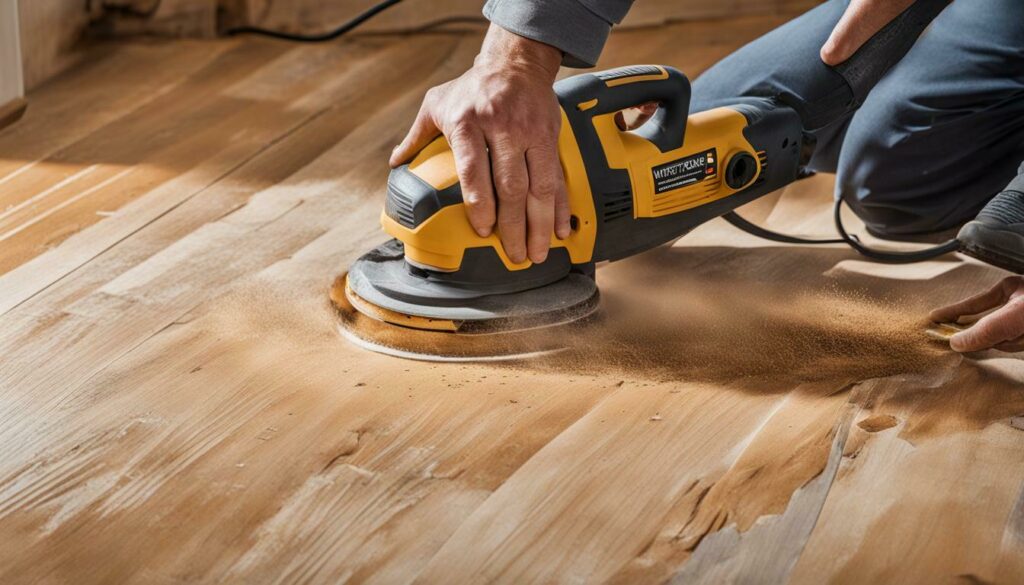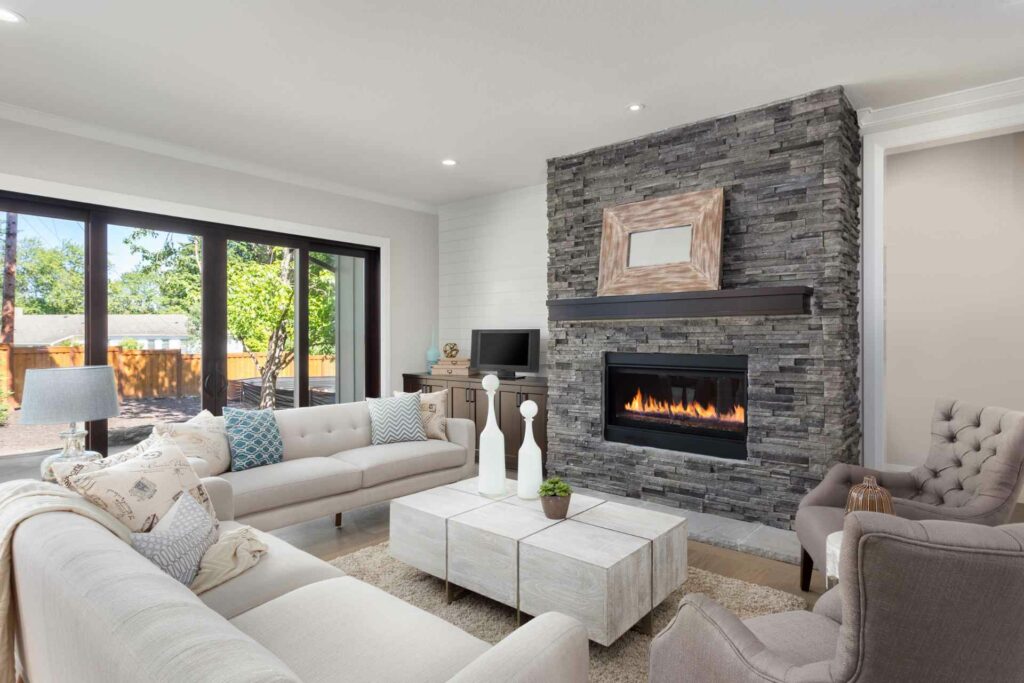How do I fix water damage on my hardwood floor?
If you’re dealing with water damage on your hardwood floor, it’s important to act quickly to prevent further harm. Water damage can cause warping, cupping, and discoloration that can compromise the structural integrity of your hardwood floor. Fortunately, with the right approach, it’s possible to fix water damage on your hardwood floor and restore it to its former beauty.
In this section, we will guide you through the process of fixing water damage on your hardwood floor. From assessing the damage to implementing the appropriate restoration techniques, we’ll provide you with the information you need to restore your beautiful floor.
Key Takeaways
- Water damage can cause warping, cupping, and discoloration on your hardwood floor.
- The first step in fixing water damage is assessing the extent of the damage.
- Drying the floor thoroughly is crucial to prevent further damage and the growth of mold or mildew.
- Repairing and restoring the hardwood floor involves replacing damaged boards, sanding down imperfections, and applying a protective topcoat.
- If you’re unsure or uncomfortable with the restoration process, it’s always best to consult a professional.
Assessing the Water Damage
Before you begin fixing water damaged hardwood floor, you must assess the extent of the damage. Signs of water damage on hardwood floors include discoloration, warping, or cupping. A moisture meter can also be used to determine the moisture content of the wood. This initial assessment will help you determine the appropriate course of action for repairing and restoring your hardwood floor.
It’s crucial to fix water damage on your hardwood floor as soon as it occurs, as delaying the repairs can exacerbate the problem. The longer your hardwood floor remains wet, the more likely it is to experience permanent damage, including the growth of mold or mildew.
In addition to visual inspections of your hardwood floor, you may need to remove floorboards to assess the extent of the damage. If you’re unsure about the damage, you should consult a professional.

Tip: don’t attempt to repair water damage on your hardwood floor if you’re unsure about the extent of the damage. A professional can help ensure the correct restoration process is followed to bring your hardwood floor back to life.
Drying the Hardwood Floor
After assessing the water damage, the next crucial step is to dry the hardwood floor thoroughly to prevent further damage and the growth of mold or mildew. The drying process should begin as soon as possible after the water damage occurs.
Start by removing any standing water from the hardwood floor using a wet vacuum or towels. Be sure to use towels that won’t leave any colour stains or dyes on the floor. Once all the water is removed, use fans and dehumidifiers to aid in the drying process. Point the fans towards the hardwood floor and windows to increase air circulation and ventilation in the room.
To determine if the hardwood floor is completely dry, use a moisture meter. Moisture meters are inexpensive and easy to use. Simply place the pins of the moisture meter on the surface of the hardwood floor to determine the moisture content. Once the moisture content is at or below the recommended level, usually around 12%, the floor is dry enough to move on to the next step of the restoration process.

If the hardwood floor is not properly dried, it can lead to further damage, including cupping, buckling, or warping. If you’re unsure about the drying process or the extent of the water damage, it’s always best to consult a professional.
Repairing and Restoring the Hardwood Floor
Once you have thoroughly dried the hardwood floor, you can move on to the repair and restoration process. The severity of the water damage will dictate the extent of the repair needed. You may only need to replace a few individual boards or sand and refinish the whole floor.
If you need to replace individual boards, start by carefully removing the damaged boards using a circular saw or chisel. Make sure to measure the size of the opening and cut the new boards accordingly. Install the replacement boards using wood glue and clamps to hold them in place while they dry. Once the glue is dry, sand the surface to smooth out any imperfections.
If the water damage is more severe, you may need to refinish the entire floor. Start by sanding down the surface of the hardwood floor to remove any existing finish or stain. Sand in the direction of the wood grain to avoid damaging the surface. Then apply a suitable wood filler to repair any gaps or cracks in the wood. Sand down the surface again to ensure it’s smooth and level.
Apply a wood stain or finish that matches the original color of the hardwood floor. Apply the first coat evenly, using a brush or roller. Allow it to dry completely before applying subsequent coats. Finish by adding a protective topcoat to restore the shine and protect the hardwood floor from future damage.
Remember to take your time during the repair and restoration process to ensure the best results. If you’re unsure or uncomfortable with the restoration process, it’s always best to consult a professional to ensure the proper repair of your hardwood floor.

Conclusion
Fixing water damage on your hardwood floor can be a daunting task, but with careful assessment, drying, and repair, you can restore your floor to its former beauty. Remember to act quickly when dealing with water damage to minimize the potential for further harm.
If you’re unsure about the restoration process, it’s always best to consult a professional to ensure the proper repair of your hardwood floor. They can help you determine the extent of the damage and recommend the appropriate course of action for repairing and restoring your hardwood floor.
By following the steps outlined in this guide, you can restore your beautiful hardwood floor to its former glory and prevent further damage to your home. Don’t let water damage ruin the beauty of your hardwood floors – take action today and restore them to their original elegance.
FAQ
Q: How do I fix water damage on my hardwood floor?
A: To fix water damage on your hardwood floor, you need to follow a step-by-step process. Assess the extent of the damage, dry the floor thoroughly, and then repair and restore the hardwood. If you’re unsure or uncomfortable with the restoration process, it’s best to consult a professional.
Q: How do I assess water damage on my hardwood floor?
A: Assessing water damage on your hardwood floor involves looking for signs of discoloration, warping, or cupping. You can also use a moisture meter to determine the moisture content of the wood. This initial assessment will help you determine the appropriate course of action for repairing and restoring your hardwood floor.
Q: How do I dry a water-damaged hardwood floor?
A: To dry a water-damaged hardwood floor, remove any standing water using a wet vacuum or towels. Use fans and dehumidifiers to aid in the drying process. Ensure that the floor is completely dry before moving on to the next restoration steps to prevent further damage and the growth of mold or mildew.
Q: How do I repair and restore a water-damaged hardwood floor?
A: After thoroughly drying the hardwood floor, you can begin the repair and restoration process. Replace any damaged boards and sand down the surface to smooth out imperfections. Apply a suitable wood stain or finish to match the existing floor color. Finally, apply a protective topcoat to restore the shine and protect the hardwood floor from future damage.
Q: Do I need to consult a professional for fixing water damage on my hardwood floor?
A: If you’re unsure or uncomfortable with the restoration process, it’s always best to consult a professional to ensure the proper repair of your hardwood floor. They have the expertise and tools to handle the job effectively and efficiently.





